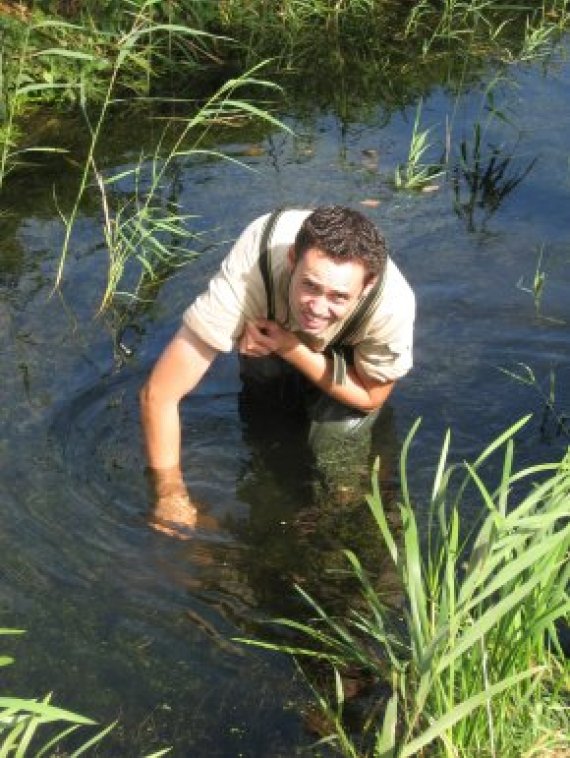The Netherlands is the country with the most ditches in the world. There are 250,000 kilometres of ditches in this wet country: about 15 metres of ditches for each Dutch citizen. Depending, of course, on how you define a ditch. No shortage of ditches then, but the quality of these waterways is poor. In particular, ditches overgrown with duckweed have a biodiversity similar to that of a bare wasteland, says biologist Jeroen van Zuidam. He obtained a doctorate yesterday for a study of how vegetation functions.Van Zuidam mapped seventy ditches in detail: what they look like, how many nutrients are present, what can grow there and is this influenced by the surroundings? In search of explanations as to why particular plants grow in Dutch ditches. It turns out to be no simple matter. Van Zuidam: ‘It is a combination of a large number of factors which determine what can grow. Together, they account for 35 percent of the variation in the composition of the vegetation. The absence of a dominant factor appears to be a typical characteristic of ditches.’ Intensive interaction between the ditch and its (distant) surroundings give rise to various factors which continually affect the ditches in slightly different ways, says Van Zuidam.
Duckweed is like a floating lid on top of the ditch
Joen van Zuidam
Water weed and duckweed dominate many ditches. These are typical examples of what is found in a ditch environment disrupted by over-fertilization and other causes. In ditches overgrown with duckweed, not much else can grow. Van Zuidam: ‘Duckweed is like a floating lid on top of the ditch. It chokes all other life forms. The concentration of oxygen in the water literally goes down to zero.’ Van Zuidam’s fieldwork shows that monocultures such as these are particularly rampant when the water and soil contain large amounts of phosphate. In addition, duckweed and water weed can survive ditch mowing better than, for example, (desirable) pondweed. Van Zuidam also showed that ditches overgrown with duck-weed have very little potential for recovery. The memory of the sediment – seed stock and other survival organs – is very limited.
The solutions are therefore obvious: less fertilizer, another maintenance method and perhaps, even grafting rich soil sediment onto the soil at the bottom of ditches with scant variety. ‘Mowing should be carried out much less rigorously,’ stresses Van Zuidam. ‘We have to stop the inspections that compel farmers to clean their ditches. Maintenance has always centered on drainage: getting rid of water as quickly as possible. But priority needs to be given to water quality, as well as quantity. This calls for a culture change. Ditches should also be maintained more at the polder level. Instead of trying to have the same rare plants everywhere, we should make the most of potential and see where the best opportunities lie. Heterogeneous maintenance is the key to more biodiversity.’

